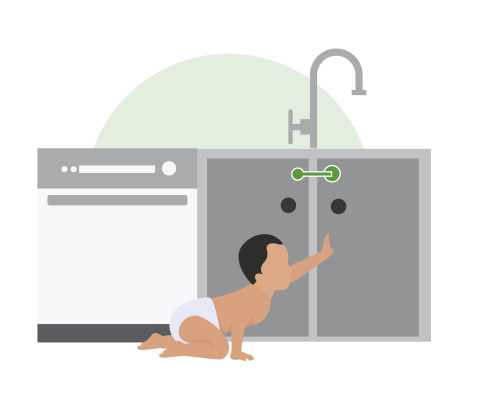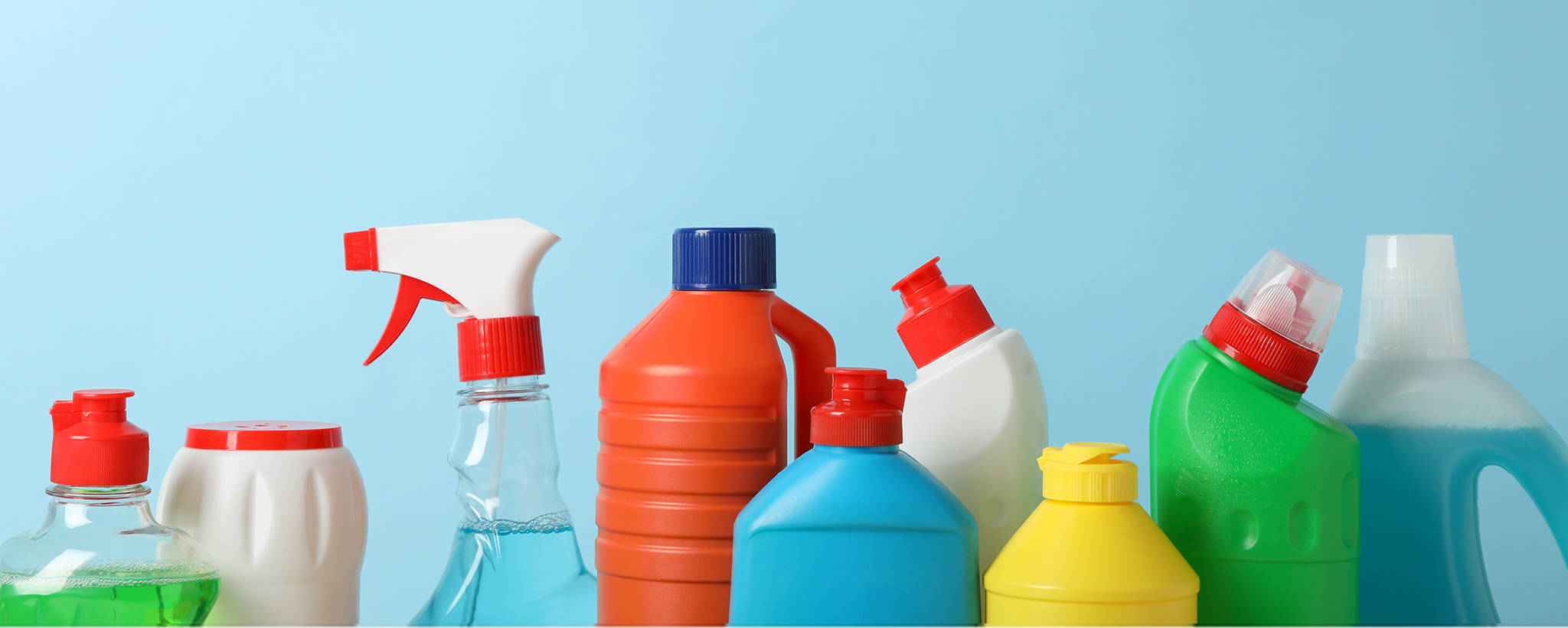Prepare Before
Survive During
Be Safe After
Nearly every household uses products containing hazardous materials or chemicals. Knowing how to handle these products can reduce the risk of injury.
Before a Household Chemical Emergency

Only store household chemicals in places children can't get to them.
Hazardous household chemicals may include:
- Aerosol cans (including hair spray and deodorant)
- Nail polish and nail polish remover
- Cleaning products and furniture polishes
- Pesticides
- Automotive products (like antifreeze or motor oil)
- Miscellaneous items (like batteries, mercury thermometers and florescent light bulbs)
- Flammable products (like kerosene, home heating oil, propane tanks and lighter fluid)
- Workshop or painting supplies (such as paint thinners and turpentine)
- Lawn and garden products (like herbicides and insecticides)
Store hazardous household chemicals safely

- Only store household chemicals in places children can't get to them. Lock or childproof cabinets and storage areas if you have children in your home.
- Keep products containing hazardous materials in their original containers and never remove the labels unless the container is corroding. Corroding containers should be repackaged and clearly labeled.
- Never store hazardous products in food containers.
- Never mix household hazardous chemicals or waste with other products. Some chemicals, such as chlorine bleach and ammonia, may react, ignite or explode.
- Never use hair spray, cleaning solutions, paint products or pesticides near an open flame
- Clean up any chemical spills immediately. Allow the fumes in the rags to evaporate outdoors, then dispose of the rags by wrapping them in a newspaper and placing them in a sealed plastic bag in your trash can.
- Dispose of hazardous materials correctly.

Save the national poison control number in your cell phone and post it next to landlines in your home: 800-222-1222.
During a Household Chemical Emergency

- Get out immediately if there is danger of fire or explosion.
- Stay upwind and away from the residence to avoid breathing toxic fumes.
- Recognize and respond to symptoms of toxic poisoning:
- Difficulty breathing
- Irritation of the eyes, skin, throat or respiratory tract
- Changes in skin color
- Headache or blurred vision
- Dizziness, clumsiness or lack of coordination
- Cramps or diarrhea
- If someone is experiencing toxic poisoning symptoms or has been exposed to a household chemical, call the national poison control center at 800-222-1222.
- Follow the emergency operator or dispatcher’s first aid instructions carefully. The first aid advice found on containers may be out of date or inappropriate. Do not give anything by mouth unless advised to do so by a medical professional.
After a Household Chemical Emergency
Discard clothing that may have been contaminated. Some chemicals may not wash out completely.


